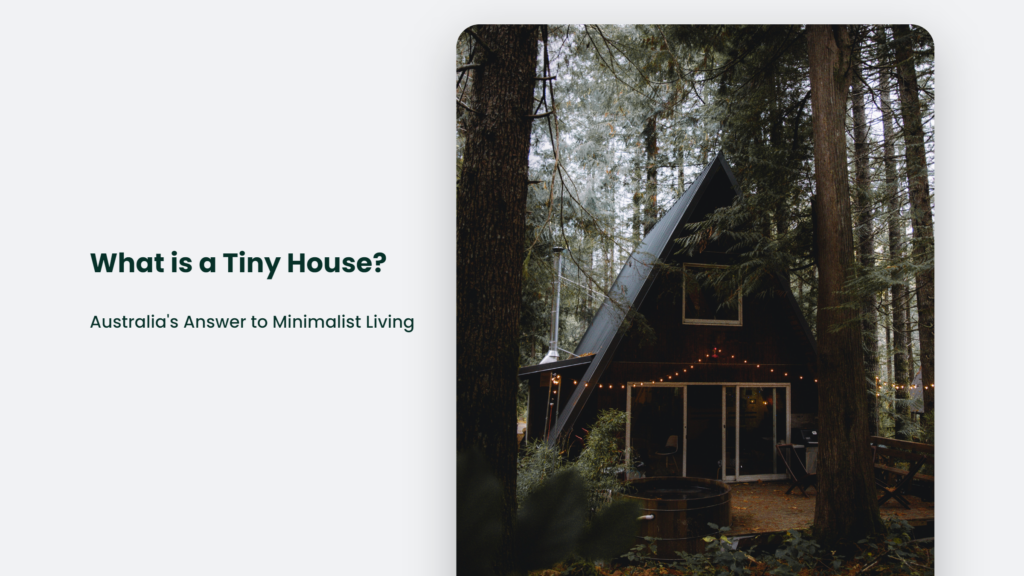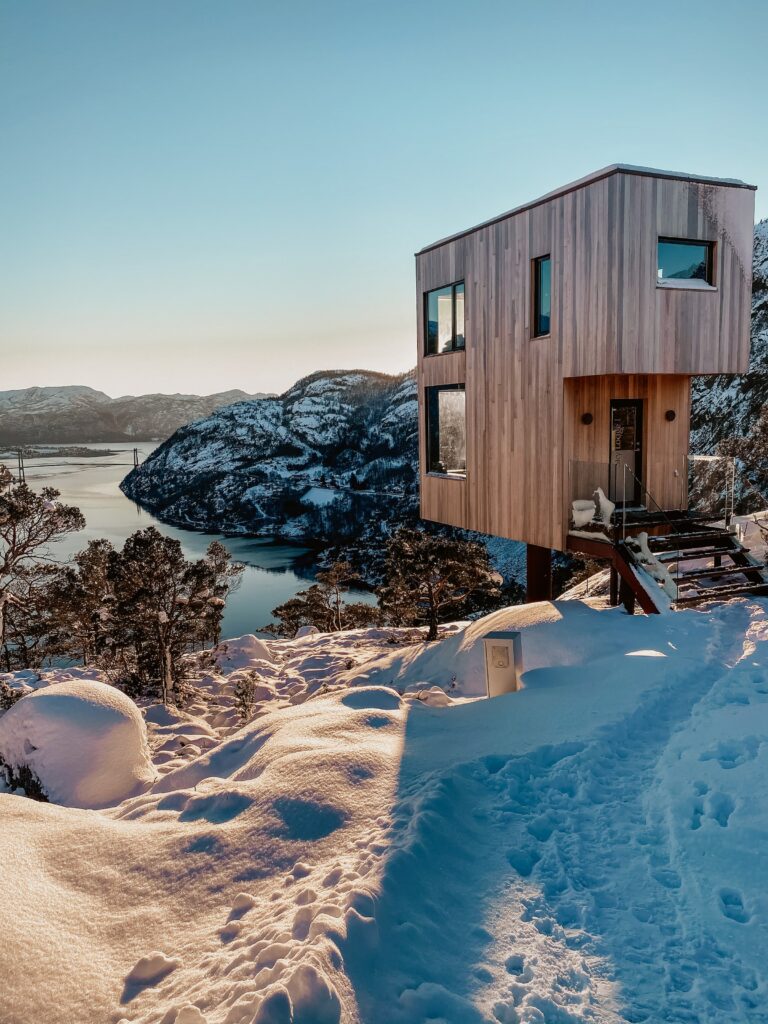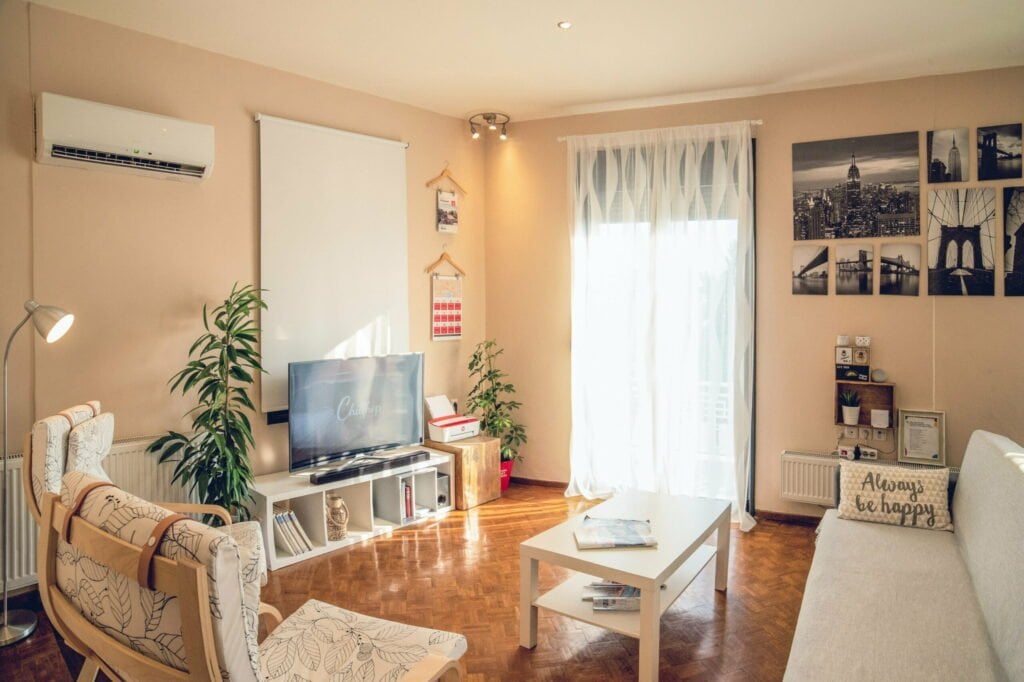Ah, the humble abode we call the “tiny house”. The name says it all. But does it? Is it merely a wee space you force yourself to live in, or is it more about embracing a new way of life? For some, it’s a drastic move inspired by minimalistic yearnings; for others, it’s a cosy retreat from the buzz and hubbub of urban sprawl.
So, what is a tiny house? It’s time to delve into Australia.

What is a Tiny House?
Let’s lay down some numbers before we skip down this puny, yellow brick road. After all, this isn’t Alice’s Wonderland, and we’re not about to get “curiouser and curiouser”. We’re curious about exactly how “tiny” is a tiny house.
Typically, a tiny house spans anywhere from 15 to 50 square metres. Now, for comparison, the average Aussie home is 186 square meters.
Yes, my dear readers, we’re discussing ditching the spacious master bedroom, the spare guest room that no one ever uses, the cavernous living area, and every other “room to spare”. It’s akin to swapping your roomy, fuel-guzzling SUV for a sleek, environmentally-friendly compact car. You’ll miss the legroom, but the simplicity and efficiency may just steal your heart.
The Anatomy of a Tiny House
Don’t get it wrong – living in a tiny house doesn’t mean you’re doomed to a life of inconvenience. These petite structures are the epitome of space efficiency and functional design.
Picture this: you walk into a warm, well-lit, and inviting space. Straight ahead, there’s a compact kitchen with neatly-arranged pots and pans, a mini fridge, and a stove. To your right, there’s a collapsible table that doubles as a work desk. A few steps lead you to a cosy loft with a comfortable bed. Voila! A perfectly functional, albeit small, house.
Did you just ask, “Where’s the bathroom?” Well, how about a combination of compost toilets, mini tubs, and space-saving sink designs?
Crazy? Maybe. Ingenious? Definitely.
The Tiny House Movement: Down Under Edition
With skyrocketing real estate prices and increasing consciousness about environmental footprints, the tiny house movement has gained momentum in Australia.
- Affordability: With the average house price in Australia reaching a staggering $1 million mark, affordability has become a driving factor for many to go tiny.
- Sustainability: Tiny houses require less energy for heating and cooling due to their size, making them a green alternative for environmentally conscious individuals.
- Simplicity: As Thoreau once wrote in Walden, “Simplify, simplify”. And there’s no better way to simplify your life than by embracing the minimalist lifestyle of tiny houses.
Tiny Houses: Not So Tiny Impacts
It’s not just a matter of physical space – the tiny house movement has also had significant social and psychological impacts.
Shrinking your living space may just expand your perspective on life. Isn’t it ironic how going small can lead to such a gigantic shift in mindset?
Sure, there are some challenges to living in a tiny house. Would hosting a dinner party in such a small space be awkward? Would you run out of room for all your stuff? How would you manage with such limited space? It’s like playing a constant game of Tetris – always calculating and fitting in bits here and there.
But, amidst these challenges lie unexpected rewards.
The tiny house movement isn’t just about smaller spaces but larger lives. It’s about breaking away from the constant clamour for more and appreciating the beauty of less.
Remember the famous quote by architect Ludwig Mies van der Rohe, “Less is more”? Tiny houses are a living, breathing embodiment of that philosophy.
Frequently Asked Questions:
Can I build a tiny house anywhere in Australia?
The zoning laws for tiny houses differ from state to state. It’s best to check with your local council for specifics.
How much does a tiny house cost?
The cost varies depending on the design and amenities. On average, a tiny house can cost anywhere from $20,000 to $150,000.
Can I build a tiny house on wheels?
Yes, you can. Tiny houses on wheels offer the advantage of mobility, allowing you to change your location as needed.
The Conclusion:
Ultimately, a tiny house is more than just a place to hang your hat. It’s a lifestyle, a statement, a whisper in the wind that echoes Thoreau’s call for simplicity. It’s about discarding the superfluous, cherishing the essential, and discovering that; sometimes, the best things do come in small packages.




